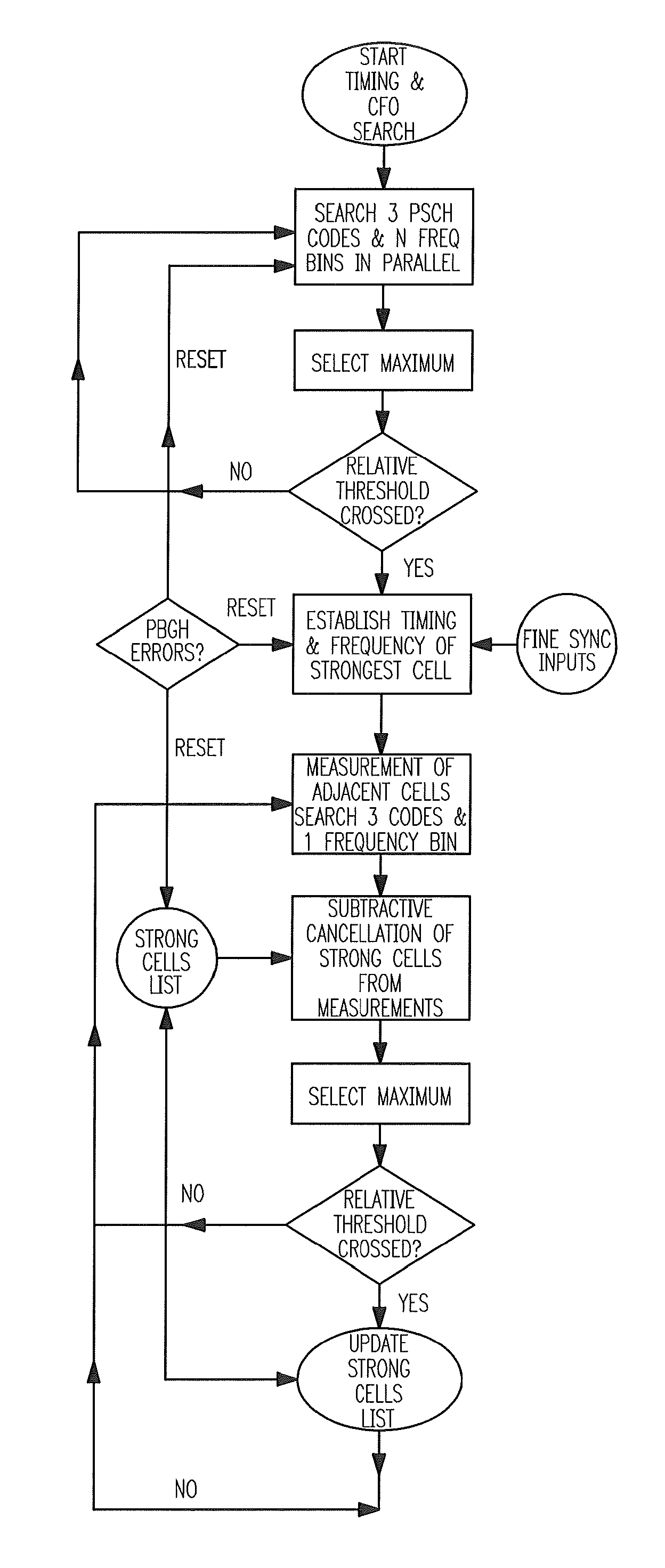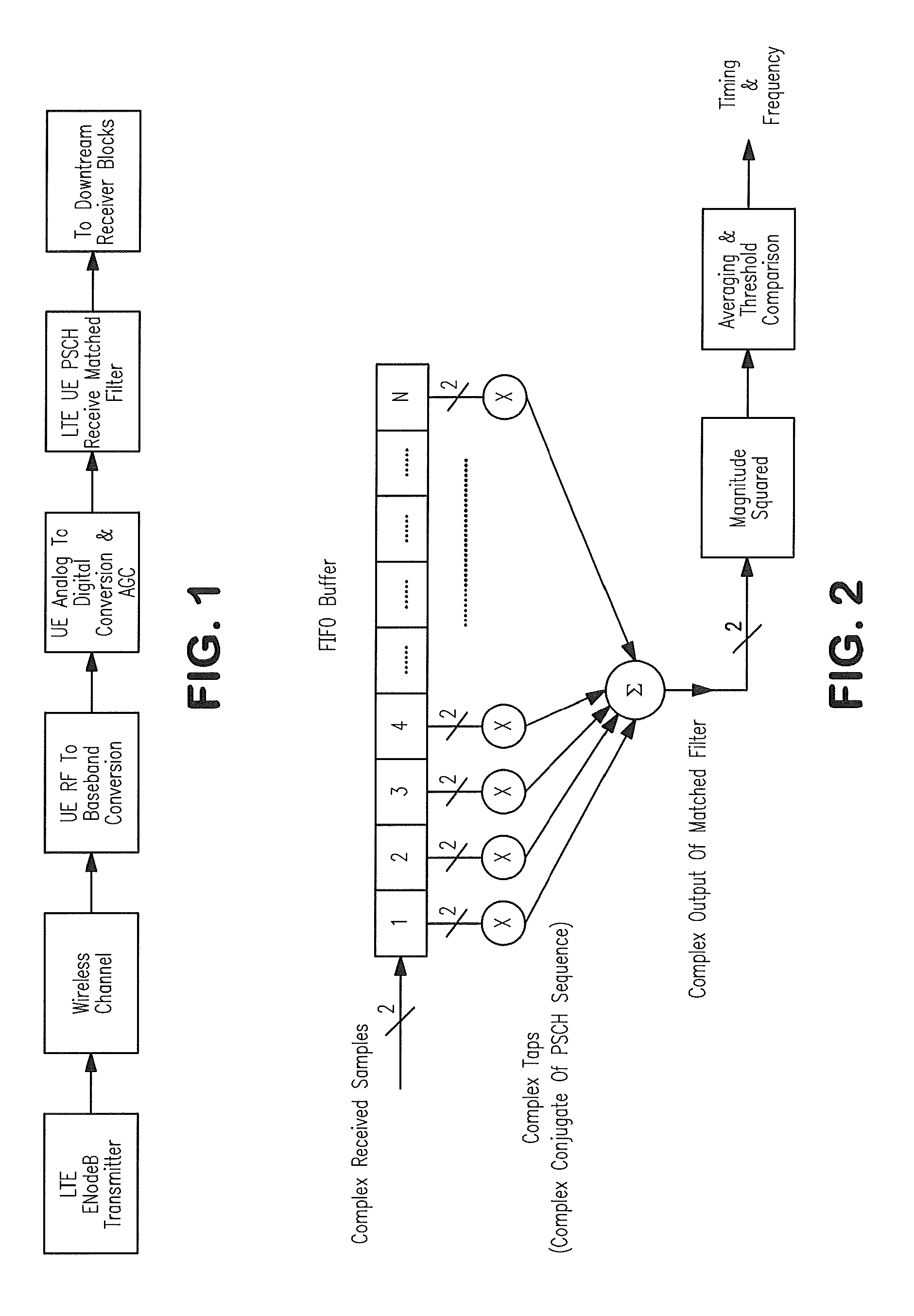Method and apparatus for improved base station cell synchronization in LTE downlink
a base station and cell technology, applied in the field of mobile wireless communication, can solve the problems of inaccurate user equipment, misdetection of timing and frequency, and expected to consume as little power as is possible to execute the necessary communication functionality, and achieve the effect of enhancing search performan
- Summary
- Abstract
- Description
- Claims
- Application Information
AI Technical Summary
Benefits of technology
Problems solved by technology
Method used
Image
Examples
Embodiment Construction
[0017]Taking into consideration the different scenarios described above involving complete or partial overlap at the user equipment of the synchronization signals from different eNodeBs, aspects of the present invention are directed to techniques whereby the strongest signal that is reliably detected is then used to enhance the search performance for timing and frequency of weaker cells. Initially, the strongest cell is first detected without any cancellation using a traditional matched filter. A matched filter is a device that correlates the incoming received signal with a local replica of the synchronization sequence and the time position yielding the largest squared output is then declared as timing of the cell. The timing position, frequency offset and amplitude information at the user equipment of the strongest cell is then stored. The weaker signals are then correlated in a similar fashion using a matched filter. During the processing of the weak cell sequence, the output of t...
PUM
 Login to View More
Login to View More Abstract
Description
Claims
Application Information
 Login to View More
Login to View More - R&D
- Intellectual Property
- Life Sciences
- Materials
- Tech Scout
- Unparalleled Data Quality
- Higher Quality Content
- 60% Fewer Hallucinations
Browse by: Latest US Patents, China's latest patents, Technical Efficacy Thesaurus, Application Domain, Technology Topic, Popular Technical Reports.
© 2025 PatSnap. All rights reserved.Legal|Privacy policy|Modern Slavery Act Transparency Statement|Sitemap|About US| Contact US: help@patsnap.com



